It’s impossible to amplify the beauty of Córdoba’s great mosque with its exceptionally tranquil and immense interior. One of the world’s greatest works of Islamic architecture hints, with all its shiny ornamentation, at a cultured age when Muslims, Jews, and Christians lived side by side and enriched their city with a diverse, vibrant culture. So, let’s see why is this Majestic Mezquita so important.
Introduction to Majestic Mezquita
Arab chronicles narrate how Abd ar-Rahman I purchased half of the Visigothic church of San Vicente for the Muslim community’s Friday prayers and then, in AD 784, bought the other half on which to erect a new mosque. Three later extensions nearly quintupled the size of Abd ar-Rahman I mosque. They brought it to the form you see today – with one significant alteration: a Christian cathedral plopped right in the middle of the mosque in the 16th century (hence the often-used description ‘Mezquita-Catedral’).
Patio de los Naranjos
This charming courtyard, with its orange, palm, and cypress trees and fountains, forms the entrance to the Mezquita. It was the site of ritual ablutions before prayer in the mosque. Its most impressive entrance is the Puerta del Perdón, a 14th-century Mudéjar archway next to the bell tower. The Mezquita’s ticket office is just inside here.
Bell Tower (Torre Campanario)
You can climb the 54m-high bell tower for pleasing panoramas and an impressive bird’s-eye angle on the main Mezquita building. Initially built by Abd ar-Rahman III in 951–52 as the Mezquita’s minaret, the tower was wrapped in a strengthened outer shell and heightened by the Christians in the 16th and 17th centuries. You can still see some caliphal vaults and arches inside. Up to 20 people are allowed up the tower every half hour from 9.30 am to 1.30 pm and 4 pm to 6.30 pm (to 5.30 pm from November to February; no afternoon visits in July or August).
The original minaret would have looked like the Giralda in Seville, which was practically a copy. Córdoba’s minaret influenced all minarets built after that throughout the western Islamic world.
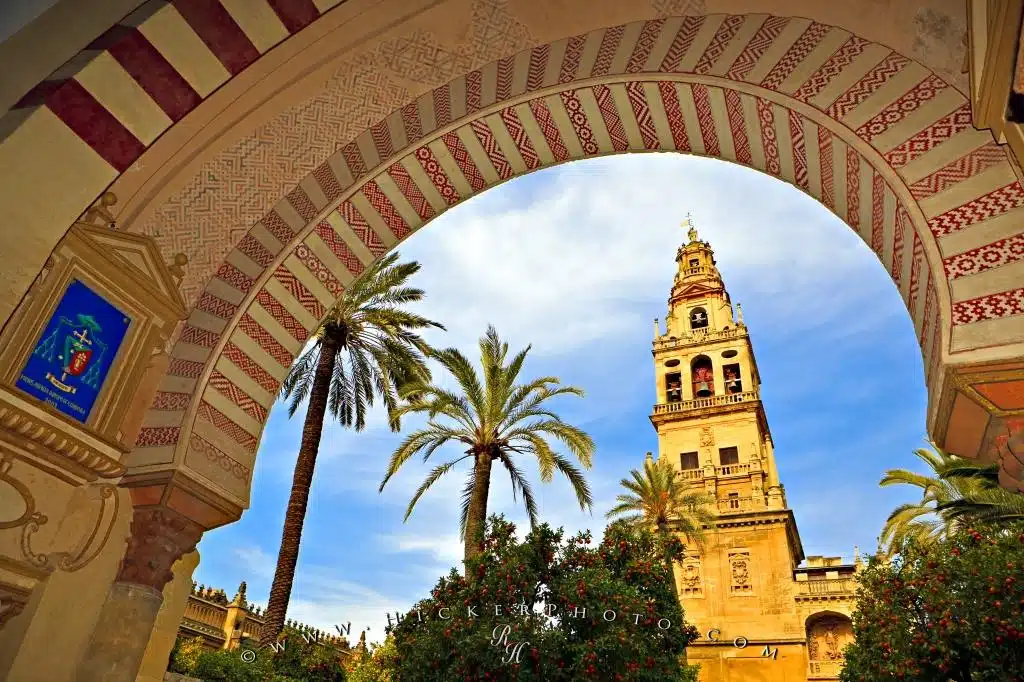
© Hickerphoto.com
Mezquita tickets
You can buy the Mosque and Bell Tower tickets on the official Cordoba Mosque-Cathedral website. Go straight to the entrance and present the QR code for scanning. You do not need to retrieve paper copies.
The Mezquita’s Interior
The Mezquita’s architectural essence lies in the fact that it was a revolutionary building. Earlier significant Islamic buildings, such as the Dome of the Rock in Jerusalem and the Great Mosque in Damascus, emphasized verticality. Still, the Mezquita was intended as a democratically horizontal and straightforward space where the spirit could be free to roam and communicate easily with God – an exquisite refinement of the original simple Islamic prayer space (usually the open yard of a desert home).
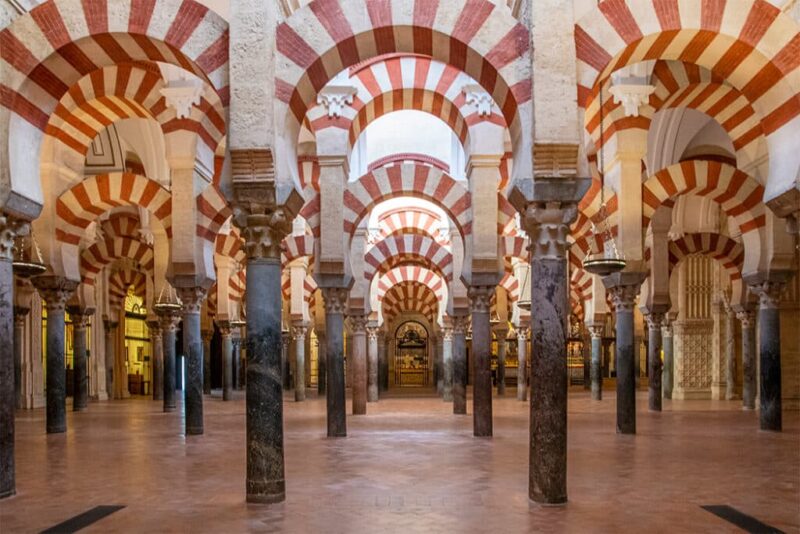
©oldtowntravels.com
A flat roof decorated with gold and colorful motifs was supported by striped arches metaphorical of a forest of date palms. The arches rested on, eventually, 1293 columns (of which 856 remain today). Helpful brochures in several languages are available free just inside the door by which visitors enter.
Abd ar-Rahman I initial prayer hall – the area immediately inside today’s visitor entrance – was divided into 11 ‘naves’ by lines of arches striped in red brick and white stone. To raise the ceiling high enough to create a sense of openness, inventive builders developed a two-tier construction, using taller columns as a base and planting shorter ones on top.
The last enlargements of the mosque, southward by Abd ar-Rahman II in the 9th century and Al-Hakim II in the 960s, and eastward by Al-Mansur in the 970s, extended it to an area of nearly 14,400 sq meters, making it one of the biggest mosques in the world. The arcades’ simplicity and number give a sense of infinity to the Mezquita.
The final Mezquita had 19 doors along its north side, filling it with light and yielding a sense of openness. Nowadays, nearly all these doorways are closed off, devitalizing the emotional effect of the red-and-white double arches. Christian additions to the building, such as the solid mass of the cathedral in the center and the 50 or so chapels around the fringes, further enclose and impose on the airy space.
Mihrab & Maksura
Like Abd ar-Rahman II a century earlier, Al-Hakim II, in the 960s, extended the naves of the prayer hall, creating a new qiblah wall (indicating the direction of Mecca) and mihrab (prayer niche) at the south end. The bay immediately before the mihrab and the bays to each side form the maksura. In this area, the caliphs and courtiers would have prayed. The mihrab and maksura are the mosque’s most beautifully and intricately decorated parts.
The greatest glory of Al-Hakim II’s extension was the portal of the mihrab – a crescent arch with a rectangular surround known as an alfiz. For the portal’s decoration, Al-Hakim asked the emperor of Byzantium, Nicephoras II Phocas, to send him a mosaicist capable of imitating the superb mosaics of the Great Mosque of Damascus, one of the significant 8th-century Syrian Umayyad buildings. The Christian emperor sent the Muslim caliph a mosaicist and a gift of 1600kg of gold mosaic cubes. Shaped into flower motifs and inscriptions from the Quran, this gold gives the mihrab portal its magical glitter. Inside the mihrab, a single block of white marble sculpted into the shape of a scallop shell, a symbol of the Quran, forms the dome that amplifies the imam’s voice throughout the mosque.
The arches of the maksura are the mosque’s most complex and sophisticated, forming a forest of intertwined horseshoe shapes. The maksura’s skylit domes are equally attractive, decorated with star-patterned stone vaulting. Each dome is held up by four interlocking pairs of parallel ribs, a highly advanced technique for 10th-century Europe.
Cathedral
Following the Christian conquest of Córdoba in 1236, the Mezquita was used as a cathedral. Still, it remained largely unaltered for nearly three centuries. But in the 16th century, King Carlos I permitted the cathedral authorities to rip out the center of the Mezquita to construct a new Capilla Mayor (main altar area) and choir.
Legend has it that when the king saw the result, he was horrified, yelling that the builders had destroyed something unique. The cathedral took nearly 250 years to complete (1523–1766) and therefore displays a range of architectural styles, from late Renaissance to luxurious Spanish baroque. Among the later features are the Capilla Mayor’s rich 17th-century jasper and red-marble retable (altar screen), and the fine mahogany stalls in the choir, carved in the 18th century by Pedro Duque Cornejo.
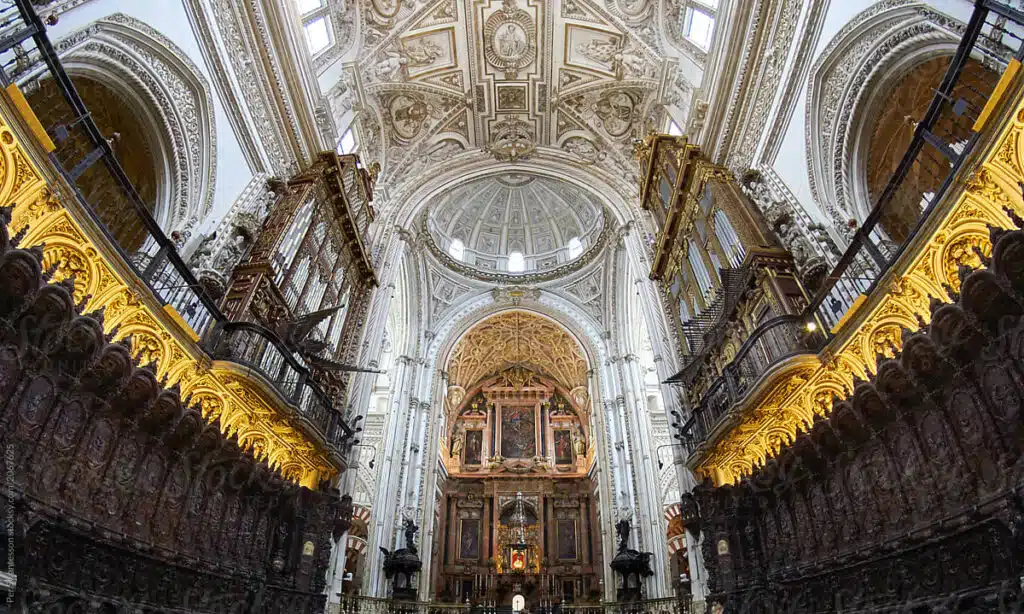
©stocksy.com/Pelle/galleries
Night Visits
A one-hour sound-and-light show (www.elalmadecordoba.com) in nine languages via audio guides is presented in the Mezquita twice nightly except Sundays from March to October and on Friday and Saturday from November to February.
Best time to visit Cordoba Mosque
The general suggestion is that the most suitable time to visit the Mezquita is first thing in the morning or last thing in the afternoon. You want to avoid the time between 10 am and 4 pm when the tour buses from Sevilla, Granada, and Malaga arrive.
So, now it is your turn. How did you like your visit to the Majestic mosque of Cordoba? We are looking forward to reading about it.
Take a look at
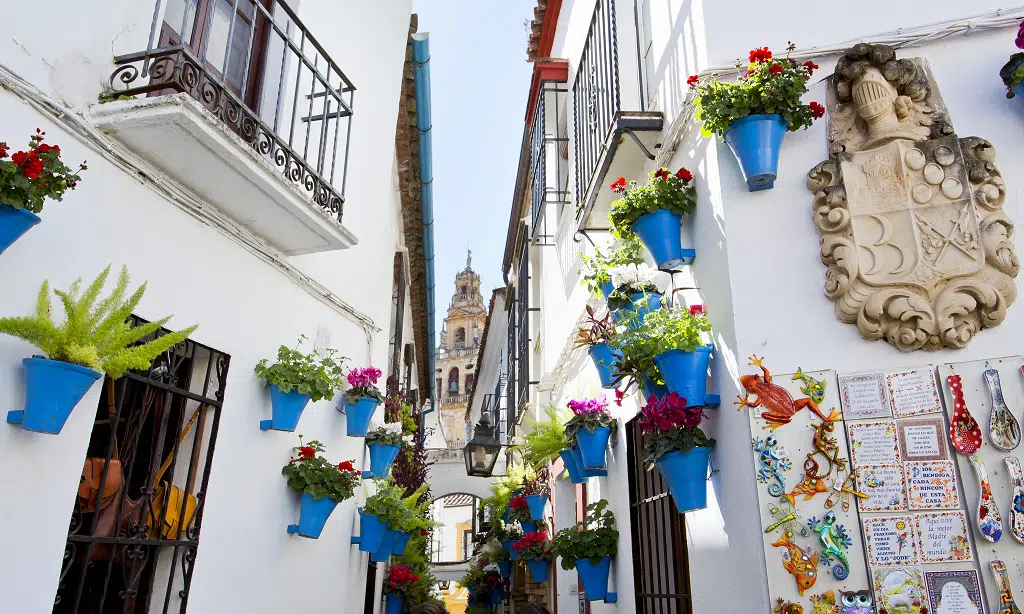
Festival of Patios in Cordoba
The Festival of Patios in Cordoba is an event in Cordoba, held every May. Therefore, the Aricle Festival of Patios in Cordoba will show you
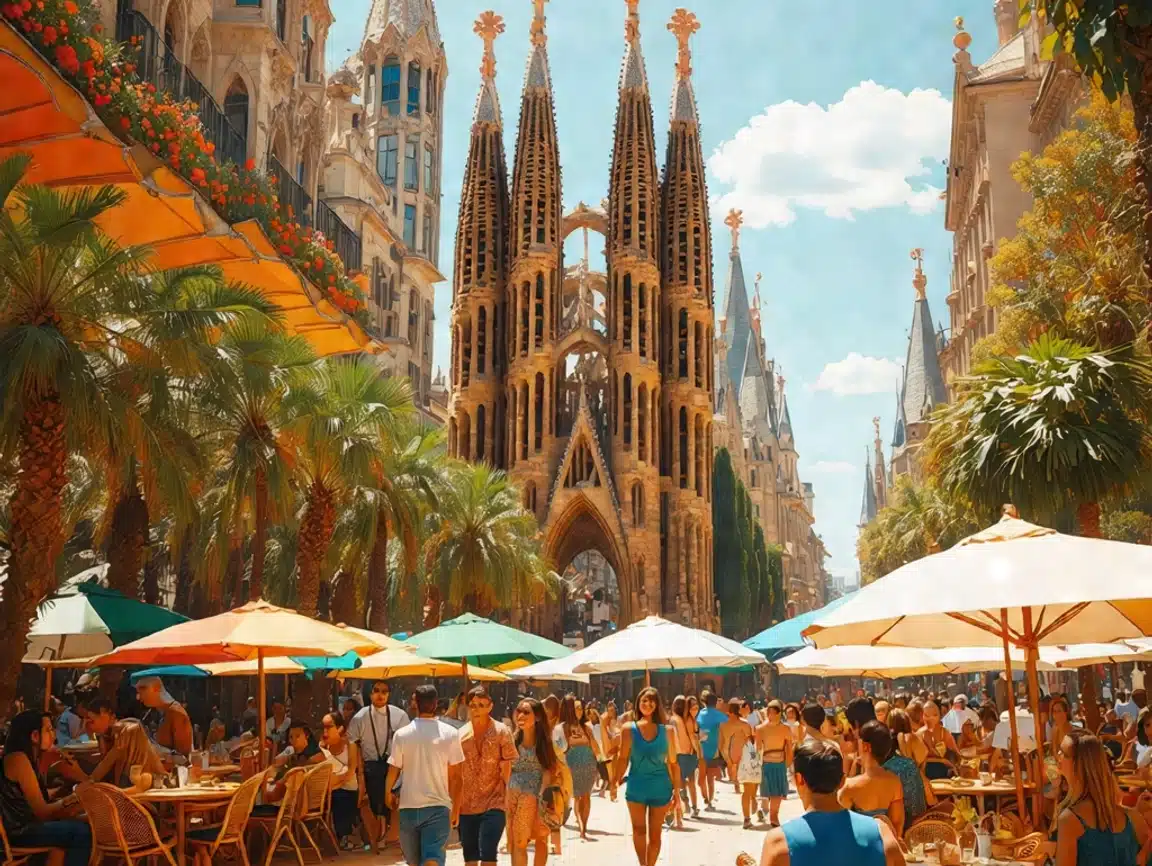
Charming guide to Barcelona
Charming guide to Barcelona This Charming guide to Barcelona will reveal the essence of this magnificent city, its significant attractions, valuable tips, and some good-to-know

Short Madrid travel guide
Madrid is an exciting city that shows how to enjoy life. If you are thinking about visiting, check out our Madrid guide. It includes tips
References and sources:
Photo credits:
Featured photo: oldtowntravels.com

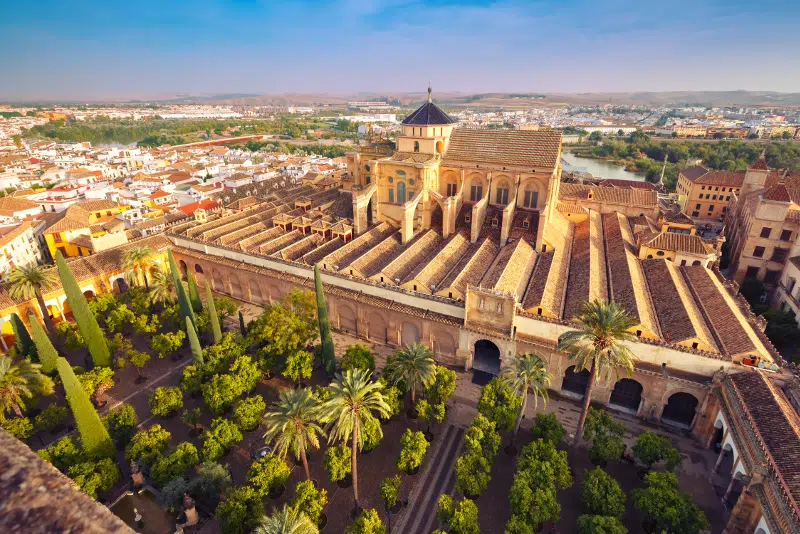

Comments are closed.